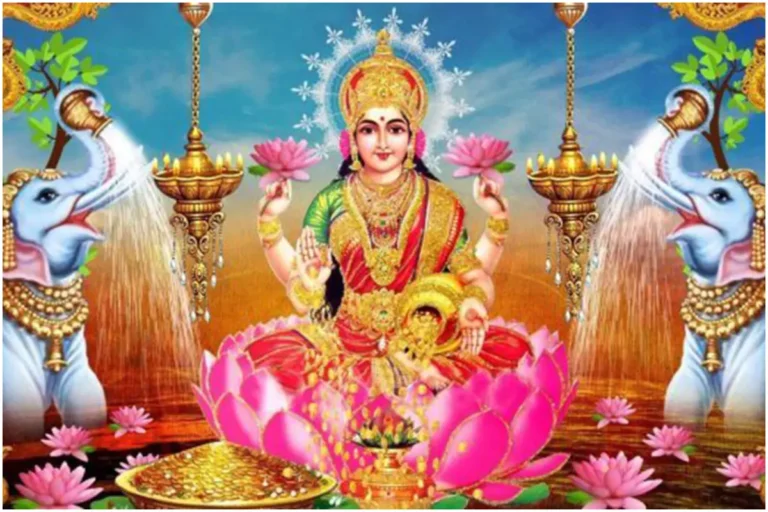Contenus
ToggleIn short
Lakshmi Puja est une fête religieuse hindoue qui tombe le jour d’Amavasya (jour de la nouvelle lune) du mois du calendrier hindou Vikram Samvat de Kartik, le troisième jour de Deepawali et est considérée comme le principal jour de fête de Deepawali.

Lakshmi Puja
According to legend, Lakshmi, the goddess of wealth, prosperity, auspiciousness and good fortune, and consort of Lord Vishnu, visits her devotees and bestows them with gifts and blessings. To welcome the Goddess, devotees clean their homes, decorate them with ornaments and lights, and prepare sweets and delicacies as offerings.
Devotees believe that the happier Lakshmi is about the visit, the more she blesses the family with health and wealth. In Bengal, Lokkhi Pujo or Laxmi puja is performed on Sarada Purnima, the full moon day following Vijaya Dashami. This puja is also known as Kojagori Lokkhi pujo. Women worship Goddess Laxmi in the evening after cleaning their house and decorating the floor of their houses with alpona or rangoli.
People wear new clothes or their best outfits as the evening approaches. Then, diyas are lit, pujas are offered to Lakshmi, and to one or more additional deities depending on the region of India; generally Ganesha, Saraswati and Kubera. Lakshmi symbolizes wealth and prosperity, and her blessings are invoked for a good year ahead.
Ce jour-là, les mères, qui travaillent dur toute l’année, sont reconnues par la famille. Les mères incarnent une partie de Lakshmi, la bonne fortune et la prospérité du foyer. De petites lampes en terre cuite remplies d’huile sont allumées et placées en rangées par certains hindous le long des parapets des temples et des maisons. Certains laissent des diyas à la dérive sur les rivières et les ruisseaux. Les relations et les amitiés importantes sont également reconnues pendant la journée, en rendant visite à des parents et amis, en échangeant des cadeaux et des bonbons.
After the puja, people go out and celebrate by lighting fireworks. Children enjoy sparklers and a variety of small fireworks, while adults enjoy playing with ground chakra, Vishnu chakra, flower pots (anaar), sutli bomb, chocolate bomb, rockets and the biggest fireworks.
Fireworks signify the celebration of Diwalias as well as a way to drive away evil spirits. After the fireworks, people return to a family feast, conversations and mithai (sweets, desserts). People also perform vaibhava Lakshmi vrat for a single day, it is believed that doing vrat on Diwali gives the blessings of vrat doing it 21 times.
Vaibhavalakshmi Vrat est également célébré dans de nombreuses régions de l’Inde au mois de Margashirsha (le neuvième mois du calendrier hindou) tous les vendredis. Vaibhav signifie «Prospérité et richesse» et, par conséquent, la déesse Vaibhavalakshmi est censée protéger les fidèles des malheurs et leur accorder grâce, bonheur, richesse et prospérité.
Social networks
celebrate the third day of the full moon Diwali festival, Lakshmi Puja. According to legend, Lakshmi, the goddess of wealth, prosperity, auspiciousness and good fortune, and wife of Lord Vishnu, visits her devotees and bestows them with gifts and blessings. To welcome the Goddess, devotees clean their homes, decorate them with ornaments and lights, and prepare sweets and delicacies as offerings. #calendar #mythology #myth #legend #hindou #diwali #lakshmi #vishnu
Picture
